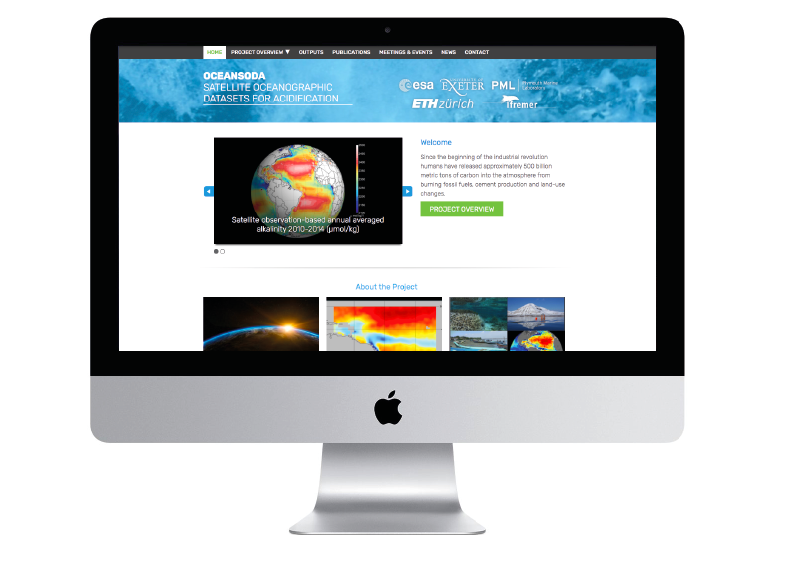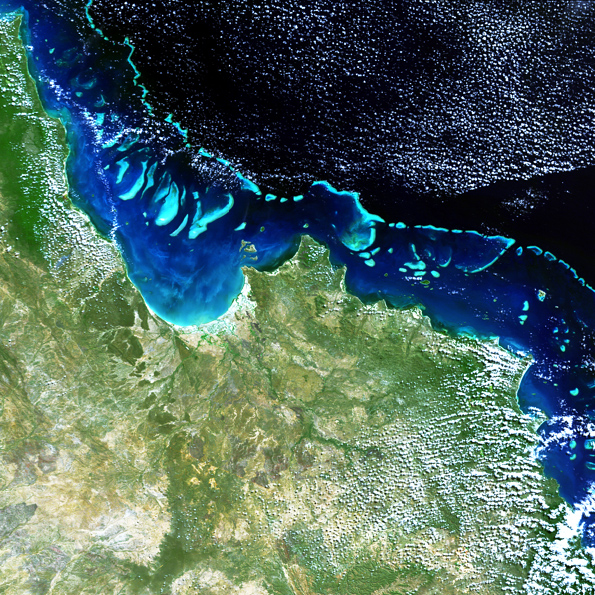Graphic Design, Web


Details:
Website design and build for The Satellite Oceanographic Datasets for Acidification Project (SODA) esa-oceansoda.org ︎︎
SODA Project Overview:
Since the beginning of the industrial revolution humans have released approximately 500 billion metric tons of carbon into the atmosphere from burning fossil fuels, cement production and land-use changes.
About 30% of this carbon dioxide (CO2) has been taken up by the oceans, largely by the dissolution of this CO2 into seawater and subsequent reactions with the dissolved carbonate ions present in seawater.
Anthropogenic emissions CO2 levelled out in 2016, but have since begun to increase again, rendering absolutely critical to monitor ocean carbon uptake. The long-term uptake of carbon dioxide by the oceans is reducing the ocean pH, a process commonly known as ocean acidification. The uptake is also altering the ocean chemistry and ecology, impacting marine ecosystems on which we rely.
–
Note The image here shows part of the world's largest coral reef, the 2300-kilometre-long Great Barrier Reef off Australia's Queensland coast, just beneath the sea surface. An area of biodiversity equal in importance to tropical rainforests, the Reef was made a UNESCO World Heritage Site in 1981.
Coral reefs worldwide are increasingly under threat from coral bleaching, where the algae is expelled from the coral tissue, progressively losing its colour and eventually dying. This phenomenon is associated with increased water temperatures, low salinity and high sunlight levels. Source: esa image bank
Collaborators: Tim Hendy at TH Design
Client: ESI / European Space Agency
Website design and build for The Satellite Oceanographic Datasets for Acidification Project (SODA) esa-oceansoda.org ︎︎
SODA Project Overview:
Since the beginning of the industrial revolution humans have released approximately 500 billion metric tons of carbon into the atmosphere from burning fossil fuels, cement production and land-use changes.
About 30% of this carbon dioxide (CO2) has been taken up by the oceans, largely by the dissolution of this CO2 into seawater and subsequent reactions with the dissolved carbonate ions present in seawater.
Anthropogenic emissions CO2 levelled out in 2016, but have since begun to increase again, rendering absolutely critical to monitor ocean carbon uptake. The long-term uptake of carbon dioxide by the oceans is reducing the ocean pH, a process commonly known as ocean acidification. The uptake is also altering the ocean chemistry and ecology, impacting marine ecosystems on which we rely.
–
Note The image here shows part of the world's largest coral reef, the 2300-kilometre-long Great Barrier Reef off Australia's Queensland coast, just beneath the sea surface. An area of biodiversity equal in importance to tropical rainforests, the Reef was made a UNESCO World Heritage Site in 1981.
Coral reefs worldwide are increasingly under threat from coral bleaching, where the algae is expelled from the coral tissue, progressively losing its colour and eventually dying. This phenomenon is associated with increased water temperatures, low salinity and high sunlight levels. Source: esa image bank
Collaborators: Tim Hendy at TH Design
Client: ESI / European Space Agency